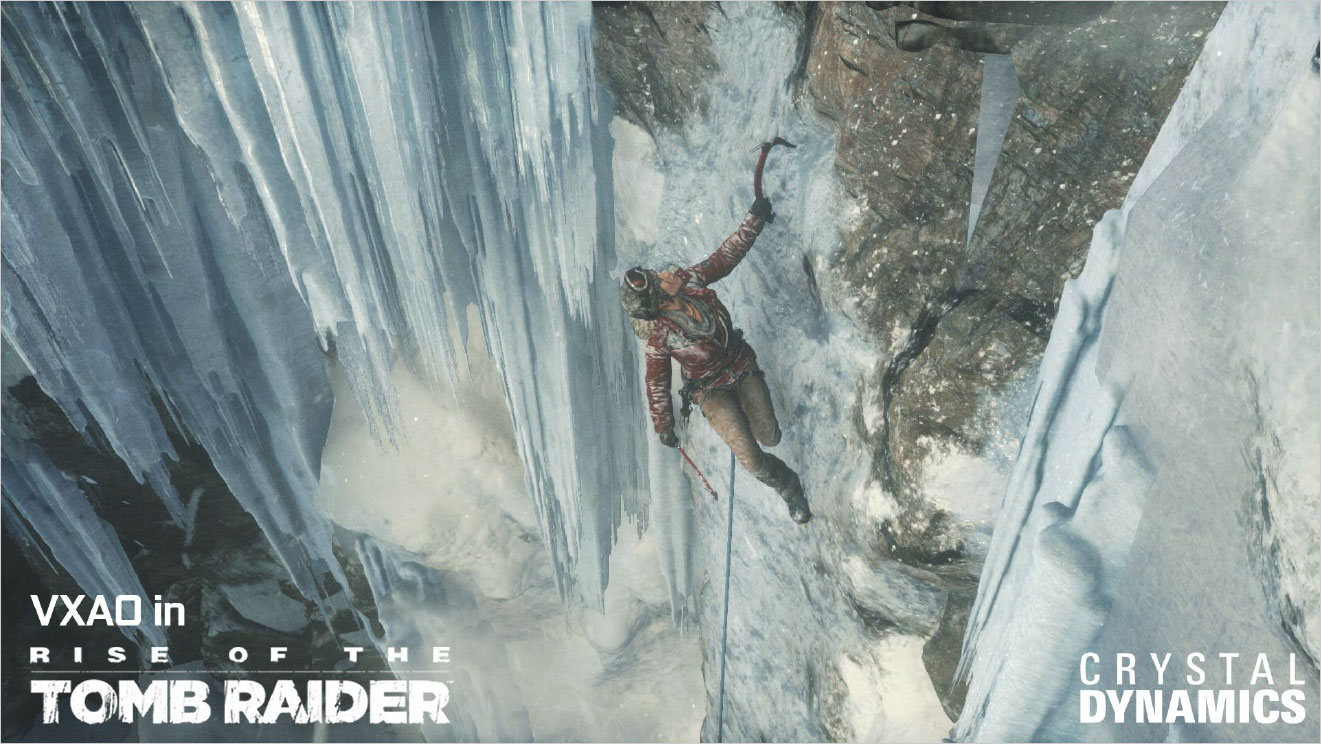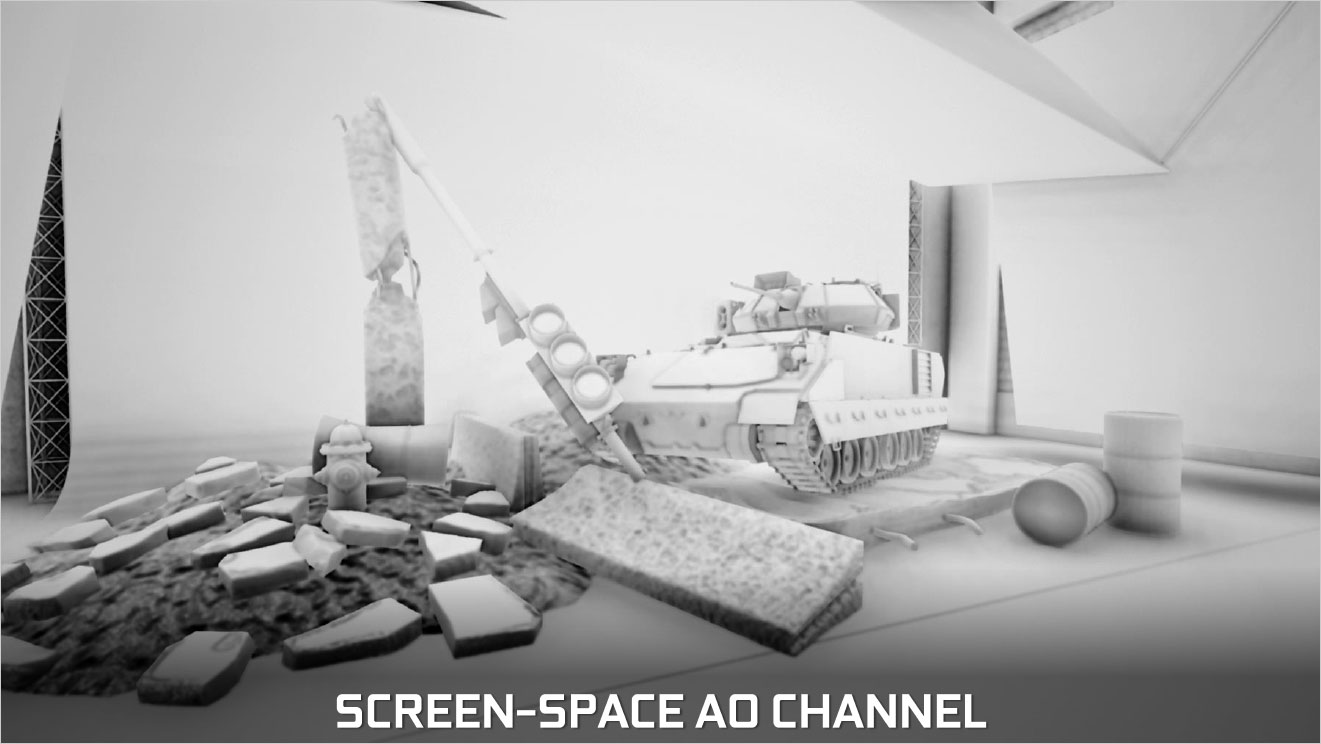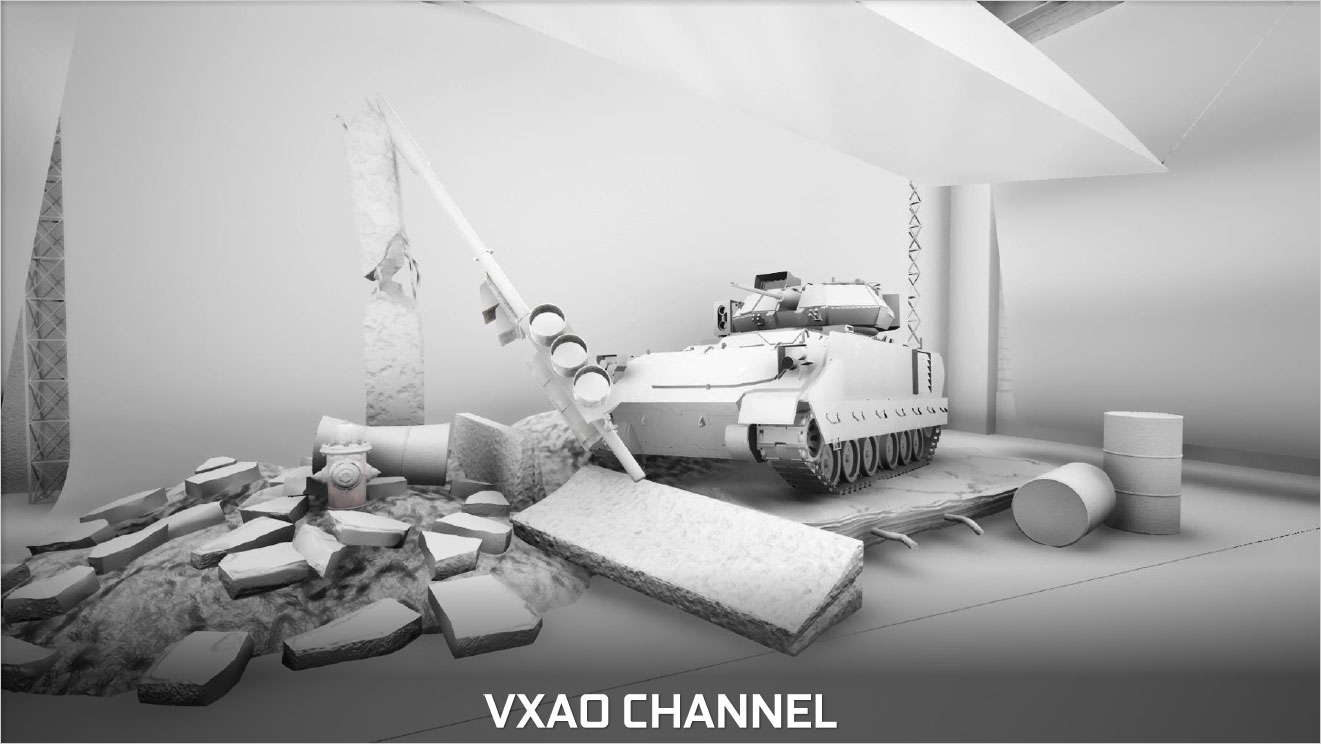Nvidia launches several new GameWorks libraries
Voxel Ambient Occlusion (VXAO)

Next is a new method for computing ambient occlusion, which is a fancy way for saying shadows are created where polygons block light from reaching nearby elements. There are many ways of computing AO, but they're all approximations of how light actually works. Most of these work in "screen space," meaning they calculate shadows from the perspective of the viewer. The newest tech is something Nvidia recently helped Crystal Dynamics add to Rise of the Tomb Raider via the latest patch, and it's called VXAO (Voxel Ambient Occlusion). Unlike most of the other AO methods, VXAO uses world space and thus increases the realism and accuracy of the shadows. It also leverages Maxwell 2.0 hardware, however, so VXAO is not supported on non-Nvidia hardware or anything less than a GTX 950 (and you'll likely need a 980 or above to be able to handle the effect, unless you're willing to turn down other settings).


Above we can see an example Nvidia provided showing normal SSAO compared to VXAO, with no texturing present. VXAO clearly improves the accuracy of the shadows, but it's more useful to look at what it does to a fully rendered game instead of a tech demo. In Rise of the Tomb Raider, there are now four available settings for GM200 class hardware: Off, On, HBAO+, and VXAO. On vs. off shows how without AO, objects and the game world can feel rather flat. HBAO+ vs. On results in incremental improvements to the shadows, while VXAO vs. HBAO+ is a far greater difference. In particular, VXAO does a great job at creating shadows underneath objects, where normal AO often leaves those areas looking "too bright."
The catch as before is that VXAO is far more demanding; AO and even HBAO+ are typically only a 3-8% hit, but VXAO drops performance by around 20% over HBAO+, or 25% compared to no AO. It's not something most users are going to be able to use right now, unless they have GTX 980 Ti or above hardware, but the next generation Pascal GPUs should have more fuel in the tank for such effects.
- Volumetric Lighting
- Voxel Ambient Occlusion (VXAO)
- High Fidelity Shadows
- Nvidia Flow and Rigid Body Physics, and VR Works
The biggest gaming news, reviews and hardware deals
Keep up to date with the most important stories and the best deals, as picked by the PC Gamer team.
Jarred's love of computers dates back to the dark ages when his dad brought home a DOS 2.3 PC and he left his C-64 behind. He eventually built his first custom PC in 1990 with a 286 12MHz, only to discover it was already woefully outdated when Wing Commander was released a few months later. He holds a BS in Computer Science from Brigham Young University and has been working as a tech journalist since 2004, writing for AnandTech, Maximum PC, and PC Gamer. From the first S3 Virge '3D decelerators' to today's GPUs, Jarred keeps up with all the latest graphics trends and is the one to ask about game performance.


